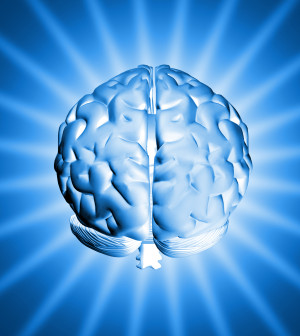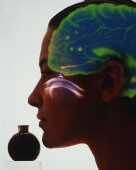- Skip Storing This Everyday Product in the Fridge Door
- Green Tea + B3 Pairing May Boost Brain Health
- Navigating Your Midlife Crisis: Embracing New Possibilities
- City Raccoons Showing Signs of Domestication
- Mapping the Exposome: Science Broadens Focus to Environmental Disease Triggers
- One Week Less on Social Media Linked to Better Mental Health
- Your Brain Changes in Stages as You Age, Study Finds
- Some Suicide Victims Show No Typical Warning Signs, Study Finds
- ByHeart Formula Faces Lawsuits After Babies Sickened With Botulism
- Switch to Vegan Diet Could Cut Your Greenhouse Gas Emissions in Half
Your Sense of Smell May Be Keener Than Thought


The human nose may be far more discerning than thought, with new research suggesting it can sniff out more than 1 trillion separate scents.
“It has often been said that humans can distinguish [only] 10,000 different smells,” said study co-author Andreas Keller, a research associate with the laboratory of neurogenetics and behavior at Rockefeller University in New York City.
But this latest finding suggests that humans can sort through more than 1 trillion smells, which is far more than the number of colors and tones that human eyes and ears can pick out, he said.
What accounts for smell’s lesser reputation?
“We tend to distrust our sense of smell because we are bad at identifying and naming smells,” Keller said. “But naming and identifying smells is not what our olfactory system evolved to do. Instead, it evolved to allow us to discriminate very similar smells, like the smell of food and the same food with the slightest hint of being spoiled. Our study shows that we are very good at this type of task.”
Keller and his colleagues discuss their findings in this week’s online issue of the journal Science.
The current investigation was predicated on the notion that odors are actually the end product of a complex mixture of molecular compounds. The scent of a rose, for example, is actually comprised of 275 different components, the study authors said.
That said, the researchers set out to assess nasal sensitivity by collecting relatively simple odor compounds, each containing just 10 to 30 different building blocks, drawn from a limited pool of 128 odor molecules.
Odor cocktails were then unveiled in 260 different groups of three, before 26 adults — 17 women and nine men, all aged 20 to 48. Two odor vials contained the same concoction, while the third vial was different, and participants were asked to sniff out the so-called “odd” odor.
After discounting for the possibility of simply guessing the right answer, the authors found that smell-testers were able to accurately discriminate odd odors 54 percent of the time.
The researchers said the human ability to smell was so strong that some of the participants were able to tell odors apart even when the vials shared as much as 90 percent of the same smell building blocks and were therefore nearly — but not quite — identical.
Test results were then funneled into a complex mathematical formula. The result: the calculation that the human nose is capable of distinguishing a minimum of 1 trillion different smells.
Despite the finding that human smell is actually a very powerful sensory instrument, Keller acknowledged that, if forced to make a choice between giving up the sense of hearing, sight or smell, he would give up smell.
“I would disagree that smell is less ‘evolved’ than these other senses,” he said. “Smell just evolved for other purposes — discriminating [between] very similar smells — than the other senses.”
“However, all that olfaction tells us about the world is what different smells there are,” Keller said. “In contrast, vision tells us mainly about the spatial structure of our environment. Color-blind vision is still very useful. Odor-blind olfaction is no olfaction at all.”
Joel Mainland, an assistant member of the Monell Chemical Senses Center in Philadelphia, said the study findings might still underplay the true strength of human smell.
“The fact is, we are much better at olfaction than we think we are,” Mainland said. “First of all, humans have 400 types of smell receptors, compared with just four in color vision and probably around 40 with respect to taste. With a smell alphabet comprised of 400 receptors, the amount of odors you can get is incredible.”
“This is a difficult experiment to conceive,” he said. “They’ve actually simplified things a lot, which is to say that while coffee, for example, has about 400 odor components in it, they used mixtures with only 30 at most. They also matched all the components for intensity, which never really happens in a natural product or even in a perfume. There’s typically a huge range of intensity.”
“If you were to do a test involving all kinds of intensities and many more components, you’d arrive at a figure that is probably much, much higher than a trillion,” Mainland said. “I’d say that a trillion is probably a severe underestimate of our ability to smell. Our sense of smell is really, really underappreciated.”
More information
Visit the Monell Chemical Senses Center for more on human smell.
Source: HealthDay
Copyright © 2025 HealthDay. All rights reserved.










